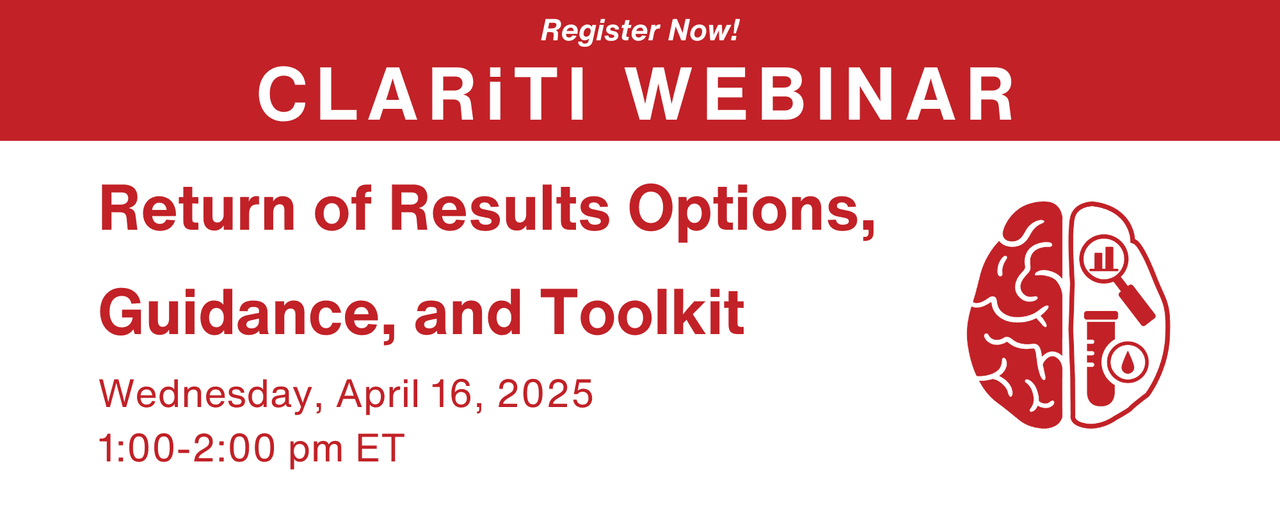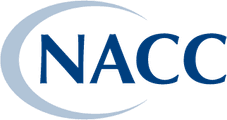
News & Study Updates
- CLARiTI Connect - March 19, 2025: UPenn ADRC is Activated, RoR Webinar and Toolkits and CLARiTI Publications
- CLARiTI Connect - February 19, 2025: Unlocking Dementia Interview w/ Drs. Johnson, Kolb & Zettererg, Study Handbook V2
- CLARiTI Connect - January 22, 2025: Study EDC launched, Flutemetamol tracer to be added and updates from Access Core
- CLARiTI Connect - December 10, 2024: mPI David Wolk on LATE, Study Updates & Meet NACC Data Team
- CLARiTI Connect - October 29, 2024: CLARiTI in the News, Study Start Up Updates, the Importance of Community Research Liaisons and more.
- CLARiTI Connect - September 26, 2024: First CLARiTI Participant, Study Start Up, Interview w/ Dr. Gil Rabinovici
- CLARiTI Connect - August 7, 2024: CLARiTI MRI Sequences, Study Start-Up, Subawards, & New Staff
- CLARiTI Connect – June 5, 2024: P30 Guidance, 6/20 Blood Biomarkers Webinar, and Access Core Updates
- CLARiTI Connect –April 23, 2024: Scope of Work, Updated Study Protocol and Documents & Call for Community Science Partnership Board
- CLARiTI Study Updates - March 25, 2024
- CLARiTI Study Updates - March 4, 2024
- CLARiTI Study Updates - February 2024
CLARiTI in the Press
- Brain scans begin for nationwide Alzheimer’s disease study - School of Medicine and Public Health
- UW–Madison receives $150 million grant to lead nationwide Alzheimer’s disease study
- University of Washington plays key role in $150M CLARiTI study for Alzheimer’s and related dementias research
CLARiTI – Study Progress
Visit the CLARiTI Study Start-up Dashboard to track your site’s real-time progress towards site initiation. Reach out to your CLARiTI coordinator to clarify or update your site’s progress.
CLARiTI Study Start-up Dashboard
About CLARiTI
The ADRC Consortium for Clarity in ADRD Research Through Imaging (CLARiTI) was developed through a 2-year planning process with input from the Imaging Core Steering Committee, NIH, and all of the Alzheimer��’s Disease Research Centers (ADRC). Through this process it became clear that there were important scientific gaps that the centers could rapidly and uniquely fill by incorporating standardized PET and MRI protocols into each center’s research visit schedule.
CLARiTI is a multi-site imaging observational study that will occur at the ADRC sites whose scientific and logistical success is facilitated by the well-established resources and environment that already exists nationally. CLARiTI runs on top of this infrastructure and seeks to closely collaborate and leverage established resources whenever possible. The consortium of ADRCs have the expertise and capacity to conduct this study and will work together to ensure its success and its impact on the field.
NACC will create subcontracts with each of the clinical sites to conduct the work proposed in the CLARiTI scope of work. NACC also coordinates flow of data from the sites to the various workgroup components of CLARiTI. CLARiTI will provide resources for standardized neuroimaging acquisitions by supporting acquisition costs as well as effort for faculty and staff.
Why CLARiTI?
Multi-etiology dementia (MED) is common but undetected in major cohort studies and clinical trials, likely slowing the discovery of new treatments. Except for the ADRCs, cohort studies intentionally restrict clinical heterogeneity to an assumed single disease. The ADRCs actively follow the largest MED cohort with a variety of critical UDS assessments including autopsy, but there is a major resource gap as imaging on this cohort is limited and ad-hoc, slowing progress. ATN imaging-a critical foundation for characterizing likely dementia etiologies—is needed on this expertly diagnosed, uniformly evaluated MED ADRD cohort where neuropathology can inform clinicopathologic correlation, mechanistic underpinnings, and strategic diagnostic and therapeutic development.
How CLARiTI Addresses This Need
- CLARiTI will utilize NACC infrastructure to accelerate and track MRI and PET image submissions from the ADRCs and to make additional image analysis and summary results available to AD/ADRD researchers through the NACC Data Front Door. The NACC infrastructure is being designed to integrate any new case report forms that are needed, including visual interpretations of images and neuropathology reports. This pipeline will return Amyloid and Tau quantitative values processed by SCAN alongside Amyloid status determined through a hybrid quantitative-qualitative assessment from the CLARiTI Image Interpretation Core to the ADRCs for their participants that are part of the CLARiTI study with secure protocols that are in accordance with HIPAA. Work flows for Tau status are currently being developed by the CLARiTI Image Interpretation Core and will be provided in Year 2 onward of the grant. The planned data flow infrastructure is shown in the figure below.
- The CLARiTI Return of Results Core will provide workflows for returning PET result status to individual sites, which may be helpful for sites that do not yet have workflows in place. We are aware that many sites are already returning results and will not use these workflows.
- CLARiTI includes a Neuropathology Core and digital pathology resource that facilitates neuropath-guided image analysis; this will likely become a major resource that can be leveraged to enhance the existing NIH investment in the program (and in the 900 existing brains from ADRC donors with antemortem imaging).
- CLARiTI will provide an unprecedented ADRC cohort of ATN data linked to extensive affiliated data on a clinically heterogenous cohort of 2000 unique participants that is available to the scientific community via NACC. This will substantially accelerate scientific discovery in the ADRC network.
- CLARiTI will build a bridge to future uniform plasma ADRD biomarker characterization in the ADRCs: Use context validation, future cost savings, and repository for discovery.
- The CLARiTI Access will provide resources related to the recruitment of under-studied research populations, and will work with each site to bolster their recruitment goals for CLARiTI and beyond.
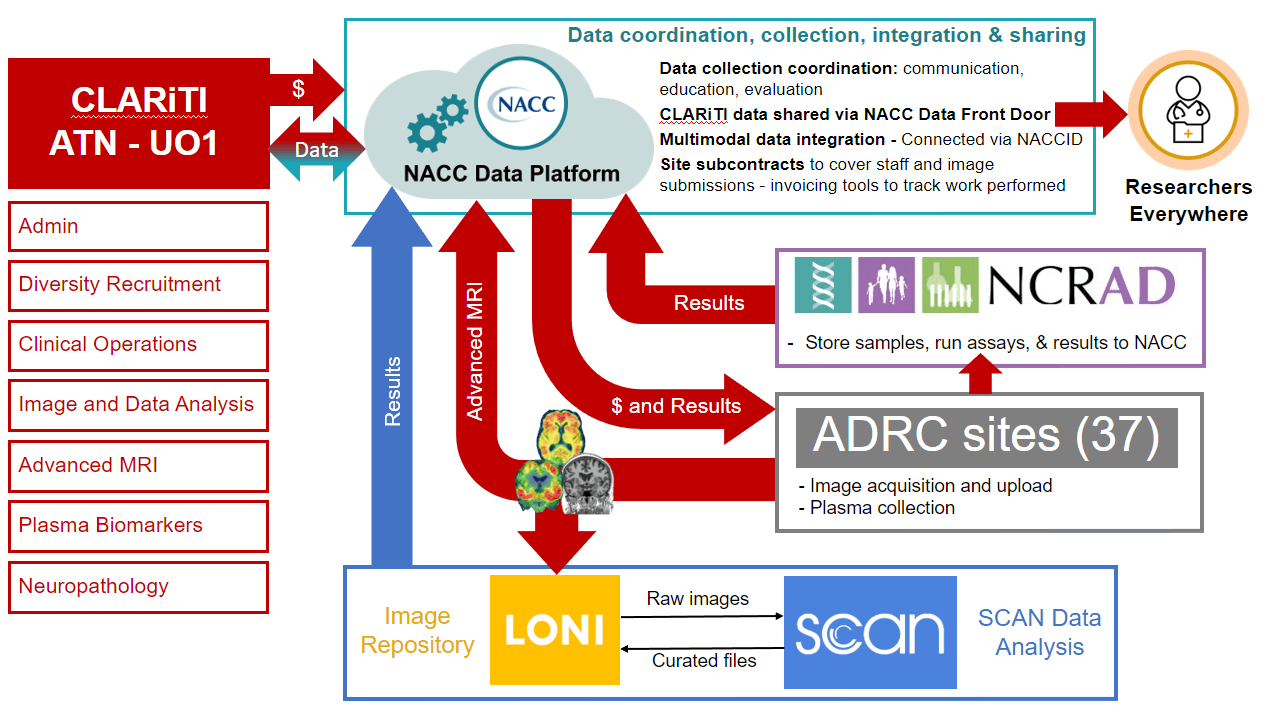
Data Sharing
CLARiTI is committed to sharing its data, images and biofluids and their derived values with qualified investigators. Indeed, a major purpose of the overall initiative and a stated goal of Aim 1 is to create and share the resource. The way that CLARiTI images and data are integrated into the overall ADRC data repository (the NACC Data Platform) and shared with Researchers everywhere is shown in the figure below.
The National Alzheimer’s Coordinating Center (NACC) functions as the data coordinating center for CLARiTI. The overall approach is that broad consent will be obtained that authorizes sharing of the data via the NACC and SCAN/LONI repositories. The images and data and biospecimens collected on ADRC participants through CLARiTI immediately become part of, and integrated with, the national databases at NACC. In addition, copies of the images may remain local for use by the site in their local research.
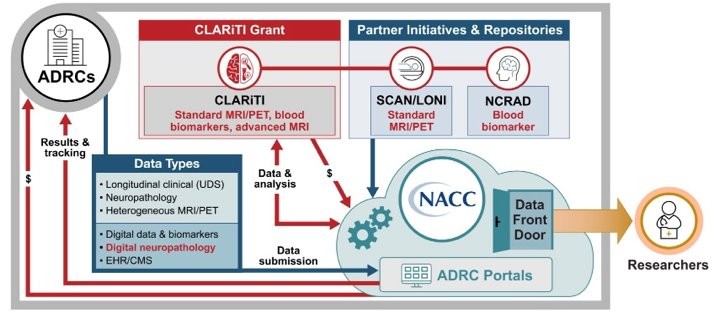
Webinars & Events
Upcoming Webinars
April 16, 2025, 1:00 pm ET | 12:00 pm CT | 10:00 am PT
CLARiTI Webinar: Return of Results Options Guidance and Toolkit
Join us for this hour-long webinar. We will give a brief update about the CLARiTI Study Start-Up, followed by a presentation from CLARiTI's Return of Results (RoR) Core. Drs. Lindsay Clark and Annalise Rahman-Filipiak, co-leads of CLARiTI's RoR core, will share guidance on RoR options and procedures and share a new toolkit designed for study sites. We will wrap up this webinar with a Q&A session.
May 5-6, 8:30 - 11:30 am San Francisco, CA
CLARiTI Investigators’ Meeting
At the ADRC Spring Meeting
Breakfast provided. Updates from each Core Q&A Discussion/Networking 150 max capacity in person. We encourage Site PIs to attend in person. Keep an eye out for your invitation. Option for virtual attendance.
Past Webinars
February 20, 2025 Expanding NACC's Infrastructure for CLARiTI
Review the Webinar SlidesJanuary 22, 2025 CLARiTI Study Start-up Updates
Review the Webinar SlidesNovember 22, 2024 Updates on the SCAN Project and Plans for SCAN 2
Review the Webinar SlidesOctober 17, 2024 CLARiTI at Fall ADRC Meeting in Boston: Scientific and Infrastructure Impacts of CLARiTI & Access Core Updates.
Review the Webinar SlidesSeptember 30, 2024 CLARiTI Webinar Series: Advanced MRI Sequences, Rationale, Goals, and Procedure
Review the Webinar SlidesAugust 28, 2024 CLARiTI Webinar Series: Visual Reads & PET Scan Processes
Review the Webinar SlidesJune 20, 2024 CLARiTI Webinar Series: NCRAD / Blood Biomarkers in CLARiTI & Neuropath Overview
Review the Webinar SlidesMay 6, 2024 NACC’s Spring Conference in Austin- Updates from CLARiTI Admin, Access, Disclosure and Imaging Cores
Review the Webinar SlidesMarch 27, 2024 Study Startup and Access Processes
Review the Webinar SlidesFebruary 28, 2024 Study Startup, Subaward Setup, and NACC flow presented by NACC.
Review the Webinar SlidesDecember 15, 2023
Review the Webinar Slides
Meet the Team
CLARiTI Executive Leadership
Sterling Johnson
- mPI
- Administration Co-Lead

Dr. Johnson is a clinical neuropsychologist with research interests in early identification of Alzheimer's disease and related disorders. He leads the Wisconsin Registry for Alzheimer’s Prevention (WRAP), a longitudinal cohort study of 1500+ people at varying levels of risk for sporadic Alzheimer's disease. He is the associate director and Biomarker Core leader in the Wisconsin ADRC, as well as the associate director of the Wisconsin Alzheimer's Institute.
Beth Mormino
- mPI
- Administration Co-Lead

Sarah Biber
- mPI
- Administration Co-Lead, Site and Data Coordination Co-Lead

Dr. Sarah Biber is the Executive Director for the National Alzheimer’s Coordinating Center (NACC), based at the University of Washington. NACC serves as the data, communication, and collaboration hub, and centralized data repository for NIA’s National Alzheimer’s Disease Research Centers (ADRC) Program, comprised of 33 centers across the United States. NACC is home to one of the largest (48,600+ participants), oldest, and most powerful AD/ADRD datasets. Dr. Biber co-leads NACC’s scientific and strategic direction and $58 million project and grant portfolio with NACC PI and Director, Dr. Walter Kukull. Within this role, she represents NACC with national partners, spearheads national initiatives, leads development of major grant applications, leads academic and industry partnerships, and oversees NACC’s tech, operations, research, communications, and grants and finance teams. Under her leadership, NACC is modernizing data infrastructure and expanding interoperability across the national Alzheimer’s Disease and Related Dementia (ADRD) ecosystem to advance research and discovery. She has a PhD in molecular and cellular biology and extensive experience leading strategy for complex centers and programs focused on advancing research and innovation.
Prior to joining NACC in November 2021, Dr. Biber led the Surgical Innovation Program at Oregon Health and Science University (OHSU) where she shaped and significantly expanded the department of surgery’s innovation capacity and footprint, co-developed surgical innovations, led academic and industry partnerships, and founded the OHSU Invent-a-thon. She previously served as the Assistant Director for NIH’s National Center for Data to Health (CD2H), where she was instrumental in launching the center and led operations to advance informatics innovation, data sharing, software development, and collaboration across the 50+ Clinical Translational Science Awards Program Centers. Prior to CD2H, she was Entrepreneurial Program Director at the Oregon Bioscience Incubator where she helped grow the incubator three-fold and spearheaded statewide partnerships to advance entrepreneurship and startups, served on state-wide committees, and co-founded Accelerate Biotech and Digital Health PDX.
Tatiana Foroud
- mPI
- Plasma Biomarkers Co-Lead

Bud Kukull
- mPI
- Site and Data Coordination Co-Lead

Dr. Kukull's research is focused on the neurodegenerative, vascular and other conditions causing dementia and cognitive impairment. These conditions include Alzheimer's disease, Parkinson's/Lewy body disease, frontotemporal lobar degeneration, and cerebrovascular disease. Since 1999, he has served as Director and PI of the National Alzheimer's Coordinating Center [U24 AG072122], an effort to collect and make available to researchers standardized, detailed clinical data from the approximately 37 NIA-funded Alzheimer Disease Centers across the United States. Dr. Kukull works closely with the leadership of the ADRCs and the National Institute on Aging to ensure that scientifically relevant and valid data are obtained and available from NACC’s database to any researcher anywhere.
In addition to NACC work, he is an investigator with a number of other NIH grants. He is an elected Fellow of: American College of Epidemiology, American Academy of Neurology and American Association for Advancement of Science.
Ozioma Okonkwo
- mPI
- Access Co-Lead

Dr. Okonkwo is a Professor in the Department of Medicine at the University of Wisconsin School of Medicine and Public Health. His research focuses on clarifying how alterations in the brain and other biomolecules place some cognitively-normal individuals on a pernicious trajectory that culminates in symptomatic Alzheimer’s disease. In this context, Dr. Okonkwo is also interested in discovering new knowledge concerning the modulation of the link between brain changes and cognitive decline by both modifiable and non-modifiable factors. Overlaid on this research agenda are investigations of health inequities, and how such inequities exacerbate or ameliorate the impact of biomarkers on clinical phenotypes. Dr Okonkwo is passionate about mentoring emerging leaders in the field, and co-directs the NIH-funded Health Enhancement Scientific Program
Gil Rabinovici
- mPI
- Visual Reads Lead

Dr. Gil Rabinovici holds the Edward Fein and Pearl Landrith Distinguished Professorship in Memory & Aging in the UCSF Department of Neurology. He received his BS degree from Stanford University and MD from Northwestern University Medical School. He completed neurology residency (and chief residency) at UCSF and a behavioral neurology fellowship at the UCSF Memory and Aging Center (MAC), where he cares for patients with cognitive disorders.
Dr. Rabinovici’s research investigates how structural, functional and molecular brain imaging techniques can be used to improve diagnostic accuracy in dementia and study the biology of neurodegenerative diseases, with the goal of accelerating drug development. He is the director of the NIH-funded UCSF Alzheimer’s Disease Research Center, study chair of the Imaging Dementia-Evidence for Amyloid Scanning (IDEAS) and New IDEAS studies (~25,000 total participants), as well as co-PI on the emerging Alzheimer’s Network for Treatment and Diagnostics (ALZ-NET), co-PI and PET Core lead of the Longitudinal Evaluation of Alzheimer’s Disease Study (LEADS) and PI on several additional national and local clinical, imaging and translational studies focused on Alzheimer’s disease and related disorders. His work is supported by the NIH, Alzheimer’s Association, American College of Radiology, Rainwater Charitable Foundation and industry partners. He has authored over 290 peer-reviewed publications, and the impact of his work is ranked in the top 1% in the field of Neuroscience.
Dr. Rabinovici’s contributions have been recognized with numerous awards, including the 2022 Kuhl-Lassen Award from the Society for Nuclear Medicine and Molecular Imaging, 2015 Christopher Clark Award in Amyloid Imaging, the 2012 American Academy of Neurology Research Award in Geriatric Neurology and the 2010 de Leon Prize from the Alzheimer’s Association.
Mónica Rivera-Mindt
- mPI
- Access Co-Lead

Dave Wolk
- mPI
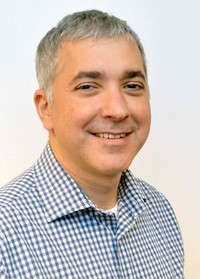
Dr. David Wolk is Professor of Neurology, Chief of the Division of Cognitive Neurology, Director of the National Institute of Aging funded Penn Alzheimer’s Disease Research Center, and Co-Director of the Penn Institute on Aging.
Dr. Wolk’s primary clinical interest has been in the diagnosis and care of individuals with a variety of neurodegenerative conditions. His research has focused on the cognitive neuroscience of memory decline associated with aging and Alzheimer’s Disease using techniques including behavioral testing, structural and functional MRI, and FDG and molecular PET imaging. Much of this work is also directed at examining biomarkers, including behavioral and neuroimaging, that differentiate healthy aging from the earliest transition to AD and their potential role in understanding disease mechanisms and incorporation into treatment trials. Dr. Wolk has had sustained NIH support since 2003 and has been the principal or co-investigator on numerous local, national and international studies, including therapeutic trials.
Dr. Wolk completed his medical training at Johns Hopkins University, a Neurology residency at the University of Pennsylvania, and clinical Fellowship training in Cognitive and Behavioral Neurology at Brigham and Women’s Hospital/Harvard Medical School; where he also completed a post-doctoral research fellowship studying memory in Alzheimer’s Disease. Amongst a number of honors, he is the recipient of the American Academy of Neurology’s Norman Geschwind Prize in Behavioral Neurology.
Nathaniel Chin
- Return of Results Co-Lead
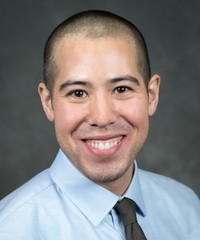
Dr. Nathaniel Chin is an associate professor in the Department of Medicine and Division of Geriatrics and Gerontology. Dr. Chin sees patients in the UW Health Memory Clinic where he also serves as the Associate Program Director. His clinical focus is on the early identification of cognitive impairment and the development of a holistic approach to care post-diagnosis. He is the medical director of the WI Alzheimer’s Disease Research Study and the Wisconsin Registry for Alzheimer’s Prevention Study. His research focuses on understanding the perceptions and implications of biomarker Return of Results as well as the effect of addressing modifiable risk factors. He has created over 170 podcasts on AD research and caregiving topics under his podcast called Dementia Matters.
Lindsay Clark
- Return of Results Co-Lead
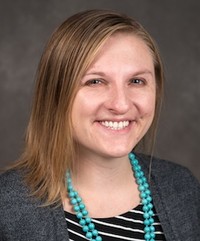
Dr. Lindsay Clark is a faculty member in the Division of Geriatrics and Gerontology in the Department of Medicine. As a neuropsychologist specializing in geriatrics, Dr. Clark provides diagnostic assessments and treatment planning as part of the UW Sauk Prairie Outreach clinic and VA Geriatric Research Education and Clinical Center (GRECC) Connect Teledementia and Cognitive Care Clinics.
She leads research projects to address barriers to early detection of cognitive impairment, including developing best practices for Return of Results of AD biomarker results as well as investigating the feasibility, reliability, and validity of digital cognitive tools and direct-to-home televideo memory evaluations. She collaborates on large multi-site studies, including leading the Neuropsychology service within the Wisconsin Alzheimer’s Disease Research Center and serving as site PI for a national study evaluating video-based cognitive assessment.
Jeff Dage
- Plasma Biomarkers Co-Lead
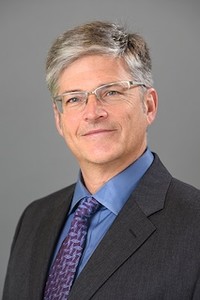
John Detre
- Advanced MRI Lead
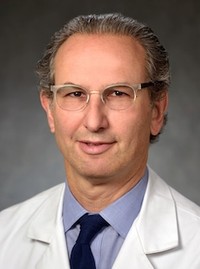
John A. Detre, M.D. is Professor of Neurology and Radiology at the Perelman School of Medicine where he is founding Director of the Center for Functional Neuroimaging in the Department of Radiology and serves as Vice Chair for Research in Neurology. He received his bachelors and medical degrees from Yale, completed fellowships in biophysics at both Carnegie Mellon University and the University of Pennsylvania, and completed neurology residency at Penn, where he has been on the faculty since 1993. Dr. Detre is also among the core faculty of the Center for Cognitive Neuroscience, currently serving as interim co-director of this Center.
Dr. Detre has been continuously funded by NIH since 1993 and is the author of over 250 original manuscripts. Drawing upon his interdisciplinary training, collaborations, and leadership skills, Dr. Detre has provided core support for neuroimaging research on the Penn Campus through an NIH funded P30 Center Core in Neuroscience Neuroimaging that is now in its eleventh year and through the Center for Magnetic Resonance and Optical Imaging, where he leads a core on imaging brain structure and function. Dr. Detre has also been extremely active in mentoring of trainees from both biophysical and biomedical backgrounds. He has been the recipient of a Mid-career Award in Patient Oriented Research and Mentoring and an NIH training grant in neuroscience neuroimaging. He currently serves as Principal Investigator of an NIH training grant targeting the career development of academically oriented neurology residents and fellows, and he serves as a mentor for several trainees and junior faculty at Penn and neighboring institutions pursuing careers in biomedical neuroimaging.
Mike Donohue
- Statistics Lead
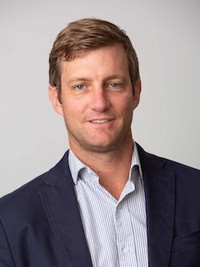
Dirk Keene
- Neuropathology Lead

Dr. Keene received his education at the University of Nevada, Las Vegas (B.S. in Cell and Molecular Biology) and the University of Minnesota (M.D. and Ph.D. in Neuroscience). His post-graduate medical training in Anatomic Pathology and Neuropathology was at the University of Washington where he earned a faculty position in Neuropathology. Currently, Dr. Keene is the Nancy and Buster Alvord Endowed Chair in Neuropathology, Professor of Pathology, Adjunct Associate Professor of Ophthalmology and Neurological Surgery, Director of the Neuropathology Division, and Leader of the Neuropathology and Targeted Molecular Testing Core at the University of Washington.
Dr. Keene is Board Certified in Anatomic Pathology and Neuropathology and regularly attends on each of the clinical neuropathology subspecialties (neurosurgical, neuromuscular, ophthalmic, and autopsy) for UW Medicine. He enjoys significant teaching and training opportunities through diverse teaching commitments, the UW Graduate School course “PATH513: Molecular Mechanisms of Neurodegeneration”, and as Director of the Neuropathology Fellowship.
Dr. Keene strives to promote scientific advancement through diagnostic and research neuropathology. Dr. Keene supervises a team of scientists, fellows, research coordinators, and histotechnologists who respectfully and expeditiously perform research autopsies in a manner that maximally and optimally preserves tissues for diverse applications for investigators around the country whilst providing accurate and timely neuropathological diagnoses according to the latest guidelines.
Dr. Keene energetically promotes tissue and data sharing, and facilitation of local and national research through collaborative and cooperative mechanisms. He strives to adapt existing and develop novel technologies to maximize the scientific utility of archived and prospectively acquired human brain tissue. The goal of the Keene Laboratory is to facilitate development of diagnostic, therapeutic, and preventative approaches for neurodegenerative disease by combining traditional and precision neuropathological strategies in human tissues with experimental approaches in model systems.
Tim Hohman
- Data Harmonization Lead
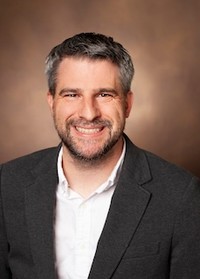
William Jagust
- SCAN Imaging Lead
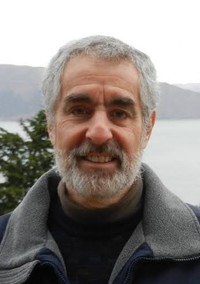
Annalise Rahman-Filipiak
- Return of Results Co-Lead
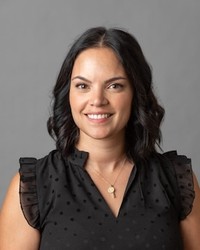
Howie Rosen
- Image Analysis Co-Lead
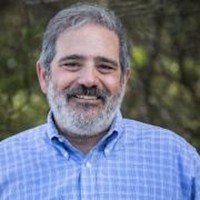
Dr. Rosen is a behavioral neurologist and holds the Dorothy Kirsten French Foundation Endowed Professorship for Parkinsonian and Other Neurodegenerative Disorders. He received his medical degree from Boston University School of Medicine, trained in internal medicine at the Albert Einstein College of Medicine in New York, and subsequently completed a neurology residency at UCSF. After residency, Dr. Rosen pursued fellowship training in brain imaging at the Washington University School of Medicine, and then returned to UCSF to join the team at the Memory and Aging Center (MAC) in 1999.
Dr. Rosen’s primary research interest is in the effects that atypical neurodegenerative diseases, in particular frontotemporal dementia, have on the brain, especially the emotional systems. His current projects use psychophysiology and imaging to examine how these diseases affect self-awareness and to determine how imaging and other biological markers can be used to track and to anticipate how these diseases affect the brain over time. He is also the director of education and outreach for the education core at UCSF’s Alzheimer’s Disease Research Center.
As part of the Memory and Aging Center, the Global Brain Health Institute and the UCSF Department of Neurology, he participates in the training of medical students, residents and fellows, and he participates in the evaluation of new patients in the MAC clinic as well as the continued management of care for individuals in the continuity clinic.
Paul Thompson
- Image Analysis Co-Lead

Paul Thompson is a Professor in the Keck School of Medicine of USC, and associate director for the Stevens Neuroimaging & Informatics Institute at USC. His team’s research projects focus on neuroscience, mathematics, computer science, software engineering and clinical aspects of neuroimaging and brain mapping.
The ENIGMA Consortium, led by Thompson since 2009, performs some of the largest-ever studies of the human brain, analyzing brain scans of more than 100,000 people worldwide. This collaborative group studies over 30 brain diseases in 45 countries, focusing on the interaction between brain health and genetics. ENIGMA has published some of the largest-ever neuroimaging studies of schizophrenia, major depression, bipolar disorder, epilepsy, autism spectrum disorder, and obsessive–compulsive disorder, and has discovered over 500 genomic loci that affect brain aging and development.
In 2020, Thompson launched AI4AD, a NIA-funded consortium, to develop AI tools to analyze and integrate genetic, imaging, and cognitive data relating to Alzheimer’s disease.
In 2023, Thompson launched the India ENIGMA Initiative, a study of factors that affect brain aging and mental health in India. Dr Thompson received the 2023 Pioneer in Medicine Award from the Society for Brain Mapping and Therapeutics, and commonly lectures on clinical neuroimaging and AI methods.
The CLARiTI Core and Component Teams
Administration
- Sterling Johnson (Co-lead)
- Beth Mormino (Co-lead)
- Sarah Biber (Co-lead)
- Erin Chin – CLARiTI Program Administrator
- Laurie Robertson – Administrative Specialist
- Phoebe Frenette - Communications Specialist
- Kelsey Shuda – Project Coordinator
- Hanzhe Gao – Project Coordinator
- Terry Ward – Neuroimaging Analyst
- Brittany Sloan – Senior Regulatory Coordinator
- Sandra Mabel Duran Rojas - Regulatory Coordinator
- Ramiro Reyes - Scientist II
- Julie Oomens - Postdoctoral Research Associate
Access
- Mónica Rivera-Mindt (Co-lead)
- Ozioma Okonkwo (Co-lead)
- Adeyinka Ajayi - Project Manager
- Sara Fernandes-Taylor - Scientist
- Stephen Cubbellotti - Data Scientist
- Vanessa Guzman (Co-I)
- Reagan Schoenholz - Community Research Navigator
- Eva Schulte - Community Research Navigator
- Emily Weiler - Community Research Navigator
Clinical Operations - Return of Results
- Annalise Rahman-Filipiak (Co-lead)
- Lindsay Clark (Co-lead)
- Nathaniel Chin (Co-lead)
- Neelum Aggarwal
- Brad Dickerson
- Claire Erickson
- Haley Kohl - Study coordinator
Clinical Operations - Visual Reads
- Gil Rabinovici (Visual Reads Lead)
- Victor Villemagne (Co-lead)
- Derek R. Johnson - Visual Reader
- Mary Ellen Koran - Visual Reader
- Renaud La Joie - Visual Reader
- Jonathan McConathy - Visual Reader
- Ilya Nasrallah - Visual Reader
- David Soleimani-Meigooni - Visual Reader
- Jeremy Tanner - Visual Reader
- Charles Windon - Visual Reader
- Michael Zeineh - Visual Reader
- Ganna Blazhenets - Visual Reads Researcher
- Carol Soppe - Visual Reads Researcher
- Zoe Lin - Visual Reads Researcher
Data Coordination and Integration - Site and Data Coordination
- Bud Kukull (Co-lead)
- Sarah Biber (Co-lead)
- Heather O'Connell - CLARiTi Program Manager
- Emily Cheng - Software Engineer
- Hannah Koenig - Data Manager
- Dan Peterson - CLARiTI Software Engineer
- Jingyan Xia - Grants & Finance Manager
- Emily Almeda - Grants & Finance Specialist
Data Coordination and Integration - Data Harmonization
- Tim Hohman (Lead)
Data Coordination and Integration - Image Analysis
- Paul Thompson (Co-lead)
- Howie Rosen (Co-lead)
Data Coordination and Integration - Statistics
- Mike Donohue (Lead)
SCAN Imaging
- Bill Jagust (Lead)
- Clifford Jack
Advanced MRI
- John Detre (Lead)
- Konstantinos Arfanakis
Neuropathology
- C. Dirk Keene (Lead)
- Howie Rosen
- Erica Melief - Neuropathology Core Coordinator
Plasma Biomarkers
- Jeff Dage (Co-Lead)
- Tatiana Foroud (Co-Lead)
Education
- Beth Mormino (Co-Lead)
- Brad Dickerson (Co-Lead)
Partners
National Alzheimer’s Coordinating Center (NACC)
The National Alzheimer’s Coordinating Center (NACC) is home to one of the largest, oldest, and most powerful Alzheimer’s datasets, built in collaboration with Alzheimer’s Disease Research Centers (ADRCs) throughout the US over the past 20+ years.
NACC will serve as the data coordination center for the project which is in keeping with NACC’s overall priority to facilitate data collection, integration, and sharing of data that advances ADRD research. All NACC data is freely available to researchers. On NACC, there is currently UDS data available on over 40K unique individuals and postmortem data available for over 6K Clinical Core participants. NACC has active collaborations with NCRAD and SCAN/LONI to bridge the extensive data on NACC with datatypes stored separately (biosamples at NCRAD, imaging data at LONI).
National Centralized Repository for AD (NCRAD)
The National Centralized Repository for AD (Foroud; Indiana University) has been supporting genetics and biofluid collection in the center's program since 1990 and is a major source for biofluids nationally pertaining to ADRD. NCRAD. NCRAD has a strong relationship with each center. The blood samples collected for CLARiTI will be done with kits supplied by NCRAD, shipped to NCRAD and assayed at NCRAD. The results will be integrated into the ADRC system at NACC and also given back to the sites.
Standardized Centralized Alzheimer’s & Related Dementias Neuroimaging (SCAN)
SCAN is a U24 collaboration led by Dr. Bill Jagust (UC Berkeley) and Dr. Clifford Jack (Mayo Clinic), colleagues at UC Davis, University of Michigan, and the Laboratory for Neuroimaging (LONI) at University of Southern California to collect standardized MRI and PET data across the ADRC program. The standardized MRI and PET images obtained in CLARITi will reside at LONI. SCAN investigators will QC the PET and MRI data and conduct essential processing to make the data available to the scientific community via NACC. CLARiTI will work with raw and processed standardized images at LONI to achieve its aims including visual reads and any additional quantification in collaboration with relevant entities and investigators.
The ADRC Program
The National Institute on Aging (NIA) funds Alzheimer’s Disease Research Centers (ADRCs) at major medical institutions across the United States. Researchers at these Centers are working to translate research advances into improved diagnosis and care for people with Alzheimer’s disease, as well as working to find a treatment or way to prevent Alzheimer’s and other types of dementia.
CLARiTI will leverage the resources of the NIA-funded P30 Alzheimer’s Research Centers program, which was originally established with 6 funded centers in 1984.
Toolkits and Resources
Preparing to participate in CLARiTI? Please review the following resources:
- CLARiTI Study Documents for ADRC Sites Box Folder
- CLARiTI Study Start-Up Dashboard
- CLARiTI Handbook
- CLARiTI readiness checklist
- IRB Approved Documents: CLARiTI consent templates, protocol, Return of Results materials and recruitment materials
- Subaward Documents: CLARiTI Scope of Work, CLARiTI DTUA Template
- CLARiTI Operations Memo: CLARiTI MRI Protocol
- CLARiTI Design Toolkit for Style, Graphics, Templates
FAQs
How can I be sure I’m on the CLARiTI contact list?
Please email clariti@medicine.wisc.edu. Let us know your name, job title, and institution and we will get you added.
What does the funding cover?
See administration and funding section above.
If we have multiple locations under one ADRC how are we set up differently for CLARiTI?
Our budget only includes funding for ADRCs. If your ADRC has multiple locations, you will have to allocate the funding as you see fit under one single subaward. The funding and scanning goal for CLARiTI remains unchanged. Please note, if scanning takes place at multiple locations, you may be required to have separate consent documents if any of the site specific information is different among your sites.
Where can our site see our progress towards study start up?
CLARiTI has launched the "Study Start-Up" dashboard for sites to track progress as they move through study start-up activities. The dashboard shows progress of all sites based on the status of their site readiness checklist tasks. Visit the dashboard here.
Where can I find the slides from the “Pre Initiation Check In” meeting with all sites?
Slides and other study start up materials can be found at this link.
Why are the Site Initiation Visits (SIV) so Long?
The SIV will last approximately 4-5 hours. This is an important opportunity for you to receive in-depth training on the study protocol, case report forms, regulatory documents and other information for running CLARiTI successfully at your site. The Central Monitoring Service will also present on the scope of their monitoring and expectations. You may view the agenda at this link.
Who needs to attend the SIV
personnel involved in the study’s execution are required to attend the SIV. However, it is essential that everyone listed on the Delegation Log, including the site PI, Sub-Is, regulatory coordinator(s), program manager, study coordinator(s), and any others are present. Depending on delegated tasks, the PI and Sub-Is are only required to attend the first 1.5 hours, covering the protocol overview, regulatory review, and CMS information will be covered. This session serves as a key opportunity for the study team to ask questions before participant recruitment begins. All team members should review the protocol and study handbook in advance.
How Can Our Site Prepare for the SIV?
The CLARiTI regulatory team will contact you to discuss the required elements of study start up, including regulatory documents and any other site activation requirements. It is important to begin working with our regulatory team at least one month before to your desired SIV date to ensure sufficient time for gathering, reviewing and organizing the necessary documentation. The Self Audit Tool designed for the startup phase will assist you in identifying the required documents. Please review the document at this link.
Will there be a single IRB?
Yes, we are using WCG as our single IRB. Please refer to the Handbook to add your site in WCG Connexus.
Where can I find IRB approved documents?
All IRB approved documents can be found in this folder. Your site will also have access to you site specific consent documents.
Will CLARiTI have materials available in other languages in addition to English?
Study materials may be translated into another language. WCG, our single IRB contracts with an outside company that provides translation services, paid for by CLARiTI funding. Your site will not receive a bill. You will upload your documents and make the selection to have them translated to the language of your choosing. After documents receive WCG IRB board approval and a Certificate of Action is provided for your site, your site will then submit a translation request to WCG. It is best practice to submit all documents needed to be translated in one submission to avoid having multiple submissions. WCG does not permit use of documents that are translated by outside services. Please be in touch with your project coordinator if you need any assistance.
Is there a partial HIPAA waiver of authorization for participating sites?
Yes, CLARiTI has received approval for a partial waiver of HIPAA Authorization for all participating sites. This waiver covers access to records for subject recruitment and screening participants for enrollment into the study. Please ensure your site has this document listed on a Certificate of Action with WCG. If your site has not yet submitted to WCG, you may reference this already established waiver upon submission.
Please ensure you include this waiver in your regulatory binder.
For more information on what is collected at the time of screening, review the Screening and Eligibility case report form at this link.Does CLARiTI have an IND? What tracers does it cover?
CLARiTI has a central IND #170860 under Sterling Johnson, PhD. It was approved by the FDA on March 6th. The Study May Proceed letter can be found at this link. This IND covers the following tracers that will be delivered to sites: MK-6240, NAV4694, and PI-2620.
How can our site reference the Central IND?
If your site will be referencing the Central IND, your site investigator will need to fill out a 1572 form. Your CLARiTI project coordinator will be in touch to collect this. Each site is assigned to work with a team of contacts from the CLARiTI Administration Core: Kelsey Shuda, Project Coordinator (klshuda@medicine.wisc.edu) & Sandra Mabel Duran Rojas, Regulatory Coordinator (clariti-regulatory@medicine.wisc.edu) Hanzhe Gao, Project Coordinator (hgao@medicine.wisc.edu) & Brittany Sloan, Senior Regulatory Coordinator (clariti-regulatory@medicine.wisc.edu)
Does CLARiTI’s IND cover sites that produce tracers? Or sites that are receiving delivery of non-FDA approved FTP?
Central IND #170860 will suffice for sites that are producing MK-6240 and NAV-4694. All other site producing PiB, PI-2620, or receiving delivery of non-FDA approved FTP, you will need to reference your local site IND.
What consent forms are available for CLARiTI
The following Consent Form Templates are IRB approved. Materials can be found in this folder:
- CLARiTI Consent Form Template V3
- CLARiTI Consent Form w/ RoR Template V3
Can anyone join CLARiTI?
ADRC Clinical Core participants (must have a NACC ID) can join CLARiTI. Sites can recruit new participants into your local center and recruit into CLARiTI from there. Please review inclusion/exclusion criteria in the study protocol.
Are recruitment and return of result materials available for prospective CLARiTI participants?
Recruitment and Return of Results materials are IRB approved. Materials can be found in the public Box folder under ‘Regulatory’ and ‘IRB Approved Materials’.
- PET Information Sheet V1
- Recruitment Handout V1
- Recruitment Letter V1
- Recruitment Phone Script V1
The Access Core is hiring a marketing firm to produce additional recruitment materials for IRB approval.
What resources can we expect for recruitment?
Each site will receive FTE for outreach personnel and $10,000 on a yearly basis to be used for events, materials, swag, etc. of your choosing.
View webinars about CLARiTI Access plans in the webinars section. Both March 27, 2024 and May 6, 2024 webinars cover more details from the Access core.
What about redundant procedures? If a participant has provided ADCFB blood at NCRAD, DVCID MRI at LONI or SCAN MRI (Option 1+)?
If these are done within 12 months of CLARiTI, then they do not need to be repeated.
Is there any consideration of accepting lesser volumes of blood to go to NCRAD?
A CLARiTI blood draw is ideal, however, we recognize this is an extra burden for your study participants. If blood volumes have been collected within the last year, we will not be requiring additional blood testing.
Are the blood tests processed in a CLIA certified lab, so sites can potentially disclose results?
No, not at this time.
How are scans uploaded?
Scans will be uploaded to LONI using the IDA uploader. CLARiTI will have a project parallel to SCAN and will use the same interface and same meta-data and user experience, through a separate CLARiTI dashboard.
Can participants be co-enrolled in other NACC associated studies?
Yes! In particular, we hope DVCID participants will co-enroll so we have flexibility on MRI.
How can CLARiTI assist P30 ADRCs in meeting their new 24/yr ATN requirement?
CLARiTI is revising guidance issued in May 2024 (CLARiTI and the new P30 imaging requirement) for sites on utilizing CLARiTI as an umbrella protocol for both P30 imaging requirement and for CLARiTI. We are on hold. Our administrative team has run up against hurdles with university spending rules and radioligand company ability to support this. Currently, the workflows to use the CLARiTI protocol to perform P30 imaging are not available but are still being explored. If your ADRC has questions, please reach out to your research coordinators, Hanzhe Gao and Kelsey Shuda. We will notify all sites when we have more concrete information.
Is SCAN MRI certification required for CLARiTI?
Yes. The CLARiTI Study requires all MRI sites to complete a specific CLARiTI MRI qualification before scanning any participants. This applies even to sites that have previously participated in studies like SCAN, ADNI, or similar ones. The qualification process includes importing the CLARiTI MRI sequences (provided by the Mayo Clinic's ADIR Lab), scanning an MRI phantom using those sequences, and uploading the certification scans to the CLARiTI project on LONI. To get started, email claritimri@mayo.edu to initiate the process of updating your MRI protocols and requesting access to the CLARiTI Q and CLARiTI projects at LONI by contacting data.coordinator@loni.uwc.edu.
How do we ensure successful image uploads?
Do not self-deface series: Defacing is handled centrally by SCAN for all relevant series before release. Self-defacing multiple times introduces undesirable data heterogeneity.
Do not self-anonymize DICOM files: Anonymization is performed by the LONI IDA uploader when images are uploaded.
Ensure the correct participant ID is assigned to the uploaded exams: Incorrect participant IDs can lead to unnecessary investigation and data cleaning.
Insert the “SCAN MRI certification for CLARiTI” in the location pointed to by the red arrow and Tips for Successful Image Uploads: in the location pointed to by the green arrow below:
How do I ensure our site is listed on the appropriate CLARiTI work orders for the radioligands.
Please reach out to CLARiTI Program Administrator, Erin Chin, to verify. Erin will be reaching out to all sites after the February 2024 site survey results are compiled. At this time, we will have a clear picture of the radioligands that will be used at each site.
Our site wants to switch the radioligand we are currently using. How do we go about changing?
Please reach out to CLARiTI Program Administrator, Erin Chin. Erin will be in touch with contacts at the appropriate company to check on availability and get your site added to the appropriate CLARiTI work orders.
When will the subaward for my site be initiated?
All sites participating in Year 1 should have received communication from NACC to begin collecting documentation to initiate the subaward process. During this step, sites will be asked to submit forms to NACC necessary to generate their draft subaward agreement. Future communications will inform sites when to expect to begin the process.
General
Study Start-up
Regulatory
Consent Forms
Recruitment
Procedures
Radioligands
NACC Subawards
CLARiTI Concierge
- To get in touch with CLARiTI team, please contact us at: clariti@medicine.wisc.edu
- To get in touch with CLARiTI Regulatory team, please contact us at: clariti-regulatory@medicine.wisc.edu
- To get in touch with NACC, please contact us at: NACCmail@uw.edu
- To get in touch regarding subawards with NACC , please contact us at: naccgrants@uw.edu
- To get in touch with the Access team, please contact us at: clariti-access@medicine.wisc.edu
- To get in touch with the Return of Results team, please contact Haley Kohl at: hakohl@med.umich.edu
- To get in touch with CLARiTI Neuropathology Core, please contact Erica J. Melief: emelief@uw.edu or email CLARiTI Neuropathology at clariti-neuropathology@uw.edu
- To get in touch with CLARiTI PET Core regarding visual reads, please email mac-clariti-petcore@ucsf.edu
- To get in touch with the CLARiTI Data Management team at NACC regarding data entry, reports, dashboards, please email CLARiTIdata@uw.edu
- To get in touch with questions about sample collection and kits, please contact CLARiTI NCRAD Clinical Research Coordinator Mica Gosnell, gosnellm@iu.edu or call (317) 274-7423.
- Connect with CLARiTI groups on the ADRC Program Community Forum
Each site is assigned to work with one of our two CLARiTI project coordinators.
| Kelsey Shuda klshuda@medicine.wisc.edu (608) 265-0548 |
|---|
| Arizona ADRC |
| Boston University ADRC |
| Columbia University ADRC |
| Duke/UNC ADRC |
| Johns Hopkins ADRC |
| University of Michigan ADRC |
| Northwestern ADRC |
| Oregon Health and Science University, ADRC |
| Stanford ADRC |
| UAB Exploratory ADRC |
| UC Davis ADRC |
| UCSF ADRC |
| University of Kentucky ADRC |
| South Texas ADRC |
| University of Washington ADRC |
| Vanderbilt Exploratory ADRC |
| Wisconsin ADRC |
| Yale University ADRC |
| Hanzhe Gao hgao@medicine.wisc.edu (608) 262-4585 |
|---|
| 1Florida ADRC |
| Cleveland ADRC |
| Emory University, Goizueta ADRC |
| Indiana University ADRC |
| Massachusetts ADRC |
| Mayo Clinic ADRC |
| Mount Sinai School of Medicine ADRC |
| New Mexico ADRC |
| NYU ADRC |
| Penn ADRC / Penn Memory Center |
| University of Pittsburgh ADRC |
| Rush University Alzheimer's Disease Center |
| UC Irvine, ADRC |
| UCSD Shiley-Marcos ADRC |
| University of Kansas ADRC |
| USC ADRC |
| Wake Forest University, ADRC |
| Washington University Knight ADRC |


